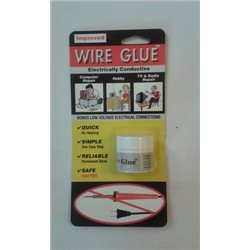When choosing a decoder for your model, it can be expected that making your model move is something that all decoders...
No products
Product successfully added to your shopping cart
There are 0 items in your cart. There is 1 item in your cart.
Search Tips
Christmas and New Year
We are dispatching orders every weekday apart from Christmas Day, Boxing Day and New Year's Day.
If you order is time critical, select next day delivery at checkout.
The shop in Sandown is closed from 25th December, reopening on 30th December.
How can I use Wire Glue on a layout or diorama?
Wire Glue is an electrically conductive adhesive specifically formulated to connect wires without the need for soldering. Wire Glue is produced by a number of manufacturers and has numerous advantages for modellers wishing to provide electrical connections to various elements of a layout or diorama, including light signals, electrical points and interior lighting for buildings on a layout to mention but a few.
Most manufacturers will supply wire glue either in a small tin or in a tube. The glue itself is generally in the form of an electrically-conductive carbon-based paste. Tube-based glues can be applied directly but tin-based glues will need to be thoroughly stirred before application. The glue is generally quite viscous which lends itself to an easy application via either a toothpick or a small paintbrush. Applied glue will generally be immediately conductive but may take a few hours to thoroughly cure. Once finally dry and cured the glue can easily be hidden by scatter or other layout features.
The glue can be applied in small doses and as such is likely to be highly advantageous, especially in confined spaces or locations that might otherwise be awkward to reach. The glue's adhesive qualities are effective on a wide range of substances and as such are likely to be very useful where soldering may not be particularly practical or to modellers who wish to avoid soldering altogether. Why not try it on your next project?
Click here to receive the tips weekly in your mailbox. You can unsubscribe at any time.








